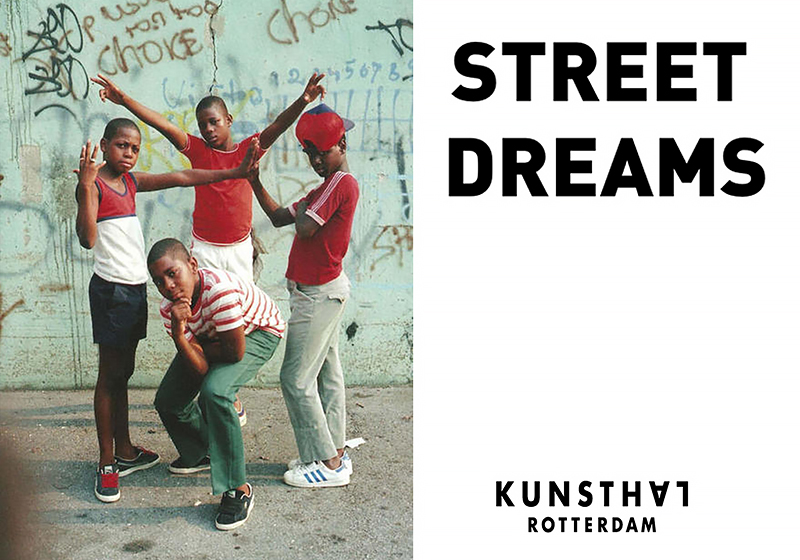Photo: Jamel Shabazz, Young Boys, East Flatbush, Brooklyn, NYC, 1981 Foto ©Jamel Shabazz
Press release: In collaboration with the HipHopHuis and guest curator Lee Stuart, the Kunsthal Rotterdam presents an exhibition about hip-hop and its influence on fashion and lifestyle. Streetwear is dictating the speed and aesthetics of the fashion industry and changing how that industry is developing itself. Hip-hop is THE youth culture of choice, dominating the charts as well as the world-wide street scene – from a source of inspiration for high fashion brands to making sportswear more accepted for everyday attire.
The Bronx is the birthplace of hip-hop culture. In a literal as well as a figurative sense, this New York borough has been on fire since the 1970s. Violence, poverty and discrimination are everyday realities. This place gave rise to a ‘do-it-yourself’ culture in which originality and credibility are key. Creativity is the essence of hip-hop, and fashion serves as a connecting element. Even though you may have been born a pauper, you can still look like a million bucks. Through visual art, photography and video installations, the exhibition ‘Street Dreams: How Hiphop took over Fashion’ show the looks, the codes and the creative force of hip hop, focusing on the origins and underlying philosophy of this street culture.
The exhibition ‘Street Dreams: How Hiphop took over Fashion’ shows images by photographers such as Jamal Shabazz, Janette Beckman and Dana Lixenberg from the early years of hip-hop fashion. Pioneers and key figures from hip-hop fashion industry are talking to the public in a larger than life-sized, immersive spatial installation especially developed for the exhibition. Heroes like April Walker, David Fischer and Angelo Baque share their own personal stories about their role in hip-hop history and their influence on the current fashion industry.
STREET DREAMS
HOW HIPHOP TOOK OVER FASHION
JUNE 15, 2019 – SEPT. 15, 2019
KUNSTHAL ROTTERDAM

Author: Within hip-hop culture, graffiti has evolved alongside Hip Hop music, B-Boying, and other elements. The clothes from Graffiti writers are important to define themselves. Picture: Backpiece jacket ZULU NATION by Tim One aka Timski and Above the law by Lase DCF. Picture The Jazz DMX with a painted jacket by king Fresh TSF, taken from a newspaper article about the hip-hop scene in the Hague and Rotterdam, Vrij Nederland 23 April 1988 (the jackets are not shown at the exhibition ‘Street Dreams: How Hiphop took over Fashion’), collection Dutch Graffiti Library.

Author: Various graffiti jackets are in museums nowadays. The value of an original jacket is high and many of those individual pieces are related to personal stories of people who are living the HipHop way of life. Picture: backpiece jackets by Herz, Page3 INC TFP, Angel CTK (the jackets are not shown at the exhibition ‘Street Dreams: How Hiphop took over Fashion’), collection Dutch Graffiti Library.
